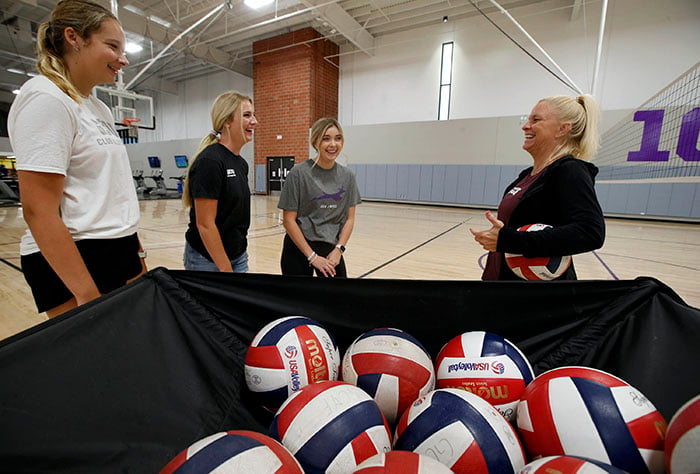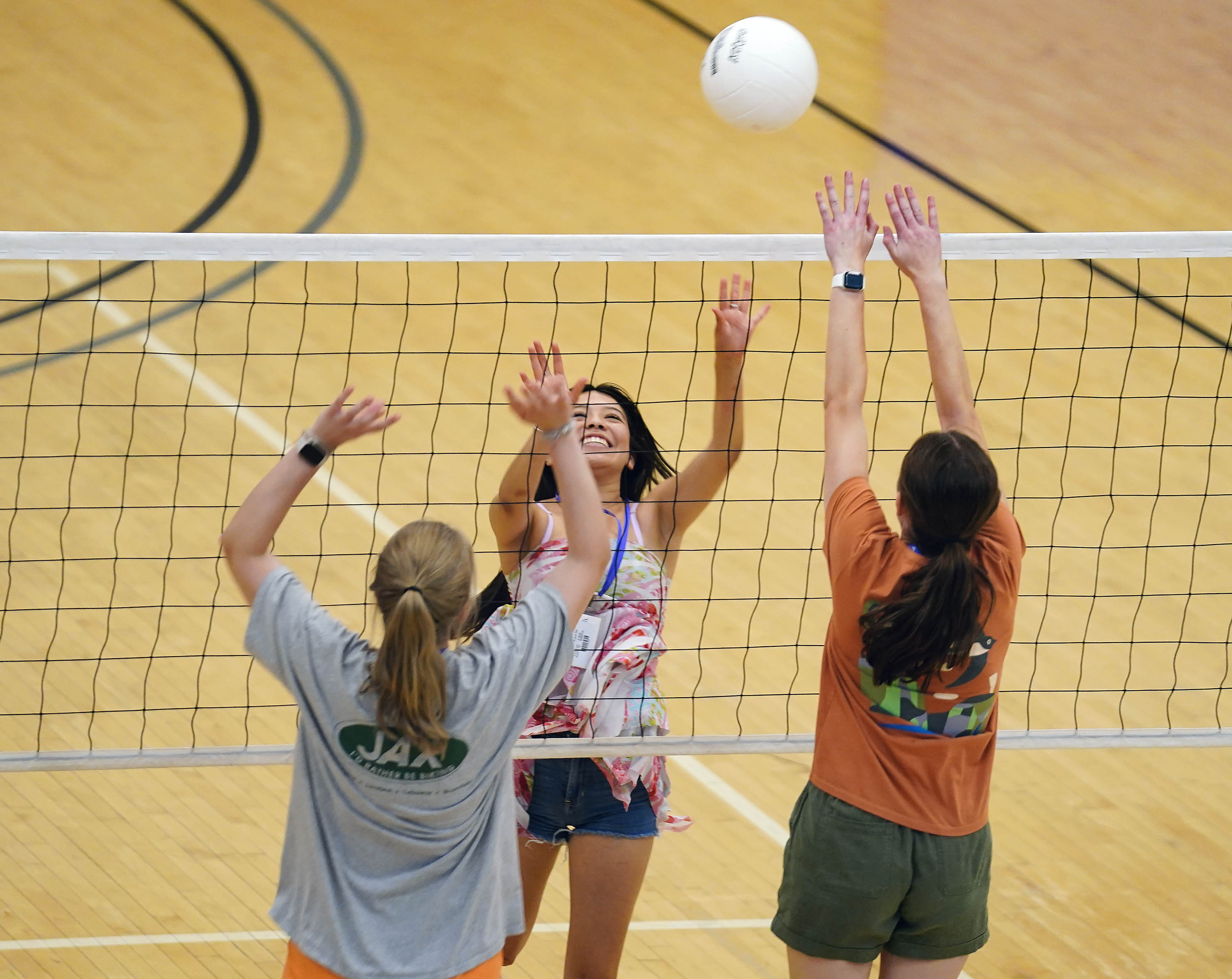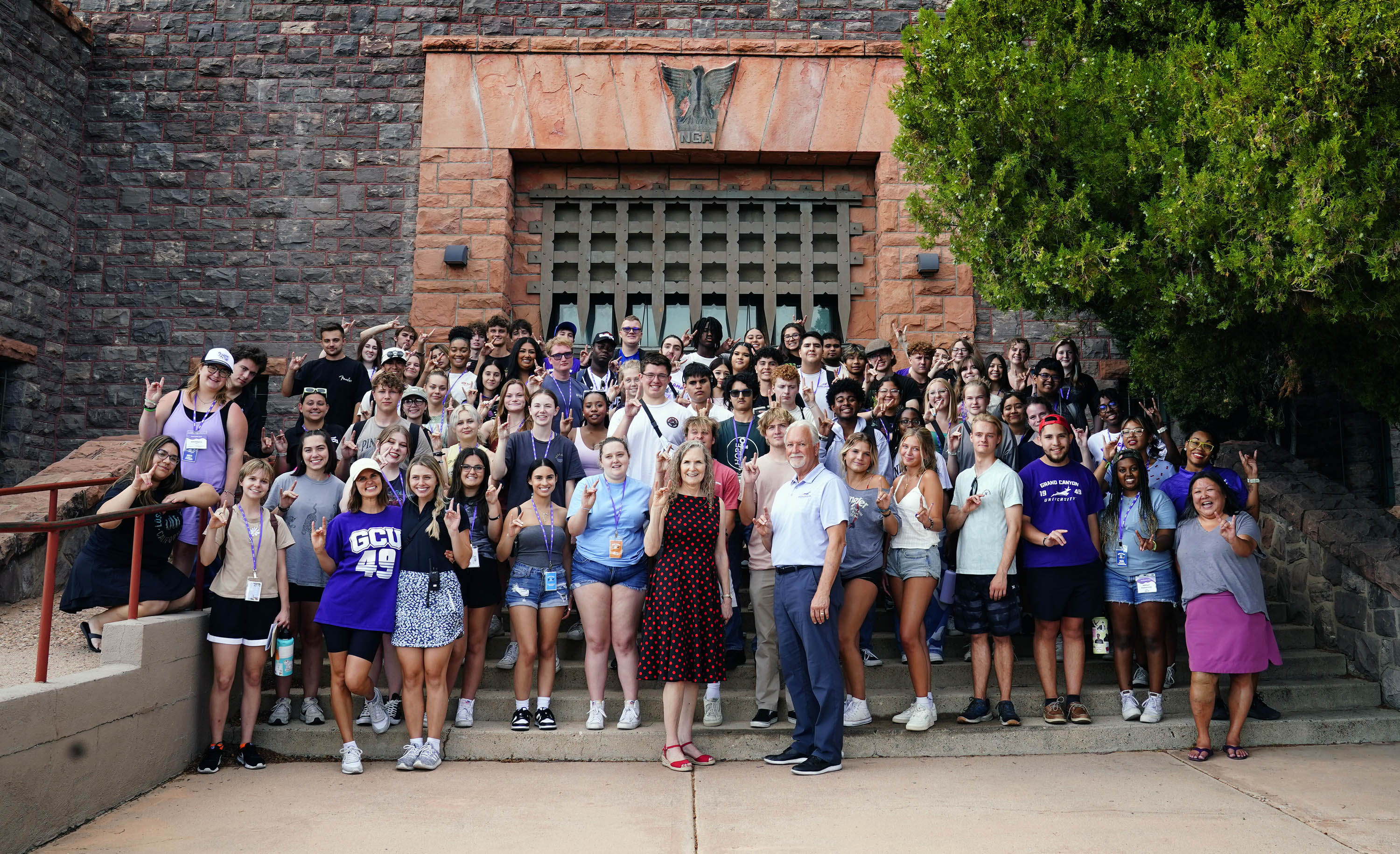
By Lana Sweeten-Shults
GCU News Bureau
With the dappling of colors in the Room 234 laboratory on the second floor of Grand Canyon University’s Engineering Building, it feels a little like spring.
Glance at the lab space and you’ll spy colored gels in pinks, blues, yellows and soft purples, all lined up in a row. But it isn’t spring-colored Jell-O in those Petri dishes.
They’re dyed hydrogels that biomedical engineering students in Dr. Kyle Jones’ biomaterials class are getting ready to test. They’re going to conduct controlled compression tests -- in not-so-technical terms, the students will “squish” the gels -- to see which one of eight hydrogel “recipes,” as Jones calls them, produces the strongest hydrogel. The class has colored each recipe with a different dye to differentiate between each gel variety.

You might not think you know anything about hydrogels. You might not think you’ve ever used a hydrogel. But it’s likely you have.
“Contact lenses are made of hydrogels,” said Jones. “Or think of those kids’ toys you put in your bathroom and it grows to, you know, five times its size. That’s a hydrogel, too.”
Hygiene products, such as wound dressings and bandages and disposable diapers, also can be made out of hydrogels.
These substances are crosslinked networks of polymers swollen with large amounts of water. Think of them as being strands held in place in a 3D structure with water filling in all the spaces in between.
The biomaterials class is looking to see how different polymers' chemistries and different amounts of crosslinking affect the strength of the hydrogels being tested. It’s an important exercise, Jones said, because biomedical students like the ones in Jones’ biomaterials class might want to someday design a replacement for knee cartilage, for example, and would need to engineer a stronger hydrogel to do so.
Or just ask Victoria Tweten, one of the biomedical engineering students in Jones’ class. She said hydrogels are similar to living tissue because their high water content makes them so flexible. A future biomedical engineer could one day need to design a hydrogel with certain qualities to, say, engineer tissue replacements.
This was the first time, Jones said, that the class has conducted such a test.
Students first did a pre run-through to punch out rubber disks instead of gel disks. They used the rubber samples for practice so that the students wouldn’t waste gel samples – the gels are made of sodium alginate or polyacrylamide, with different concentrations of crosslinking agents used for the different recipes. The pre-run also helped the students calibrate the machines being used in the controlled compression tests.
Once the rubber hit the road, it was time to squish the gels.
Students took gel punches the size of a hole punch and placed them in a glass of liquid that then was centered on a Mach 1 Biomomentum BioTester. Such instruments are used to test biomaterials, everything from skin to muscle tissue, and to test artificial materials, such as hydrogels.
“I just like testing things to see how they work,” Tweten said during the hydrogels lab. “We have used the BioTester before to test the strain of pulling rubber.”

GCU student Dani Bischoff says what she liked most about the lab was “getting to work on the machine,” while Delaney Henderson said she liked getting to work in groups.
The lab teaches students, not just about the strength of hydrogels, but how to be detail-oriented, Jones said. “It’s training your brain to think like an engineer. Even if the results don’t look picture-perfect or pristine, you learn a lot. A lot of the bio stuff is not cut and dry. We do stuff and see what happens.”
What has happened for GCU is creating an educational experience that isn’t just sit in the classroom, listen to the professor and take notes.
In engineering, as it is across the University, the emphasis is hands-on, getting in the lab and doing active, rather than passive, work.
Jones said the biomedical engineering program this year touts more than 75 students. It is one of the fields in engineering that generates a lot of interest among women.
“We are, among engineering, about 50-50 male-female. Every other engineering is vastly different, like 80-20 male-female or 85-15,” Jones said.
“The reason I like bioengineering is I like the stuff that I’m making. It feels like I’m making more of a difference or I’m helping others more,” Jones continued. “It’s a bit more like a service-oriented or care-giving sort of thing.”
One student in the lab said she picked biomedical engineering as her major because “it’s a medical field with math.”
“Why do you like the medical field?” Jones asked.

“Because you can help people,” she said.
Biomedical engineers make implantable devices, such as pacemakers and artificial hips, create 3-D printed biological organs, do stem cell engineering and make prosthetics, to name a few.
“It’s a wide range, and it’s a very fast-growing field,” he said.
One day, perhaps one of the students in the hydrogels lab will move from squishing some colorful gels to going on to make that super strong prosthetic knee.
Jones thinks about his student’s answer of why she loves biomedical engineering – “because you can help people” – and says, with a smile, “That’s what motivates me.”
GCU senior writer Lana Sweeten-Shults can be reached at 602-639-7901 or by email at lana.sweeten-shults@gcu.edu. Follow her on Twitter @lanasweetenshul.











